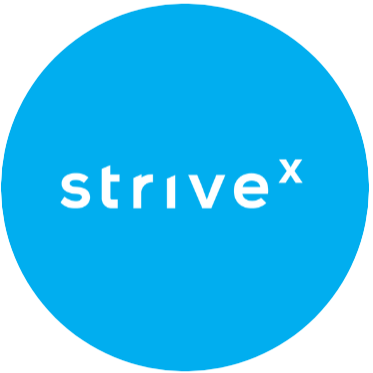Starting your own box truck business might sound like a big leap, but for many entrepreneurs, it could be a manageable and rewarding way to get into the transportation game without needing a commercial driver’s license (CDL). If you’re motivated, resourceful, and ready to roll up your sleeves, a non-CDL box truck business can offer flexibility, freedom, and solid income potential.
At Swoop, we work with small business owners every day who are mapping out their next move. Whether you’re starting from scratch or shifting gears from gig work to something more stable, this checklist is designed to walk you through the potential steps for launching your box truck business the right way.
What is a box truck?
A box truck (sometimes called a cube van or straight truck) is a vehicle with a large, enclosed cargo area built directly onto the chassis. It looks like a big rectangle on wheels — perfect for moving goods, furniture, equipment, and other sizable loads. Most box trucks used for non-CDL operations fall under the 26,000-pound gross vehicle weight rating (GVWR), which means you can drive them with a standard license.
They’re commonly used for last-mile delivery, small-scale freight hauling, moving services, or even niche markets like medical or retail deliveries. Because they don’t require a CDL, the barrier to entry is significantly lower than other types of commercial driving businesses.
Checklist for starting a non-CDL box truck business
Getting your business off the ground takes more than just buying a truck and hitting the road. Like any new venture, there are a few behind-the-scenes pieces that need to be in place before you start booking jobs and earning income. The good news? You don’t need a CDL, a fleet of vehicles, or a huge budget to begin. This checklist walks you through each step, practical, approachable, and focused on helping you build a business that runs smoothly from day one.
1. Draft a business plan
Before you do anything else, sketch out a business plan. It doesn’t need to be an extensive formal report, but it should include your goals, expected expenses, service offerings, and a basic idea of who you’re serving and how you plan to reach them.
A good plan might include:
- Services you’ll offer (e.g., furniture delivery, office moves, local freight)
- Pricing structure
- Startup and recurring costs
- Revenue projections
- Competitor analysis
- Growth goals
Even if you never show it to anyone else, it can keep you focused and organized.
2. Decide your niche and how much to charge
Narrowing your focus can make it easier to build a brand and attract the right kind of customers. Maybe you want to specialize in local appliance deliveries, or maybe you’re more interested in helping e-commerce sellers with last-mile logistics. Find the overlap between what’s in demand and what you’re good at.
From there, figure out how you’ll price your services:
- Flat fee per job?
- Per mile?
- Hourly rates?
Consider your vehicle costs, fuel, labor (even if it’s just you at first), and local market rates. Your pricing should cover your expenses and leave room for profit, but it also needs to make sense for your customer base.
3. Find startup funding
Box truck businesses can start modestly, but you’ll still need upfront capital for things like your truck, insurance, supplies, registration, and possibly marketing. You could fund this through personal savings, a loan, or a line of credit.
Some common funding sources include:
- SBA loans
- Equipment financing
- Business credit cards
- Family/friends (with clear terms)
- Grants for trucking businesses
Swoop can help you compare funding options, especially if you’re not sure where to begin.
4. Secure business permits and licenses
Even without a CDL, you’ll still need to handle business registration and compliance:
- Register your business (LLC, sole proprietorship, etc.)
- Apply for an EIN from the IRS
- Check local or state regulations for transport services
- Get a U.S. DOT number if required (even non-CDL operations sometimes need one)
- File a BOC-3 (designation of process agent) if crossing state lines
5. Narrow down your target market
It helps to be clear about who you’re serving. Are you helping local small businesses with deliveries? Partnering with moving companies? Contracting through load boards?
The more specific your target market, the more tailored (and effective) your messaging and service offerings can be.
6. Invest in a good box truck
You can rent, lease, or buy — each has pros and cons.
- Renting might be great for early testing or short-term gigs.
- Leasing offers predictable payments and may include maintenance.
- Buying means higher upfront costs, but more long-term control.
Used trucks can often range from $10,000 to $30,000, depending on age, mileage, and specs. Just be sure the truck meets your service needs and local legal requirements.
7. Find excellent drivers
If you’re not operating solo, you’ll eventually need help. Hiring non-CDL drivers may give you a wider applicant pool, but you’ll still want to ensure they’re:
- Responsible and punctual
- Familiar with local roads
- Trained in customer service
Providing basic training and safety onboarding can go a long way.
8. Build your business reputation
When you’re just getting started, every customer counts. Ask for reviews, deliver on time, communicate clearly, and make sure your branding (truck decals, uniforms, emails) reflects professionalism.
A few ways to build your rep:
- Set up a Google Business Profile
- Create a simple website or landing page
- Collect testimonials and reviews
- Be consistent with your customer communication
9. Invest in a good route planner software
You don’t need to spend hours planning routes with pen and paper. Software tools can optimize your stops, reduce fuel use, and improve delivery time. This becomes especially helpful if you’re managing more than one job per day.
Apps like Route4Me, Circuit, or OptimoRoute might be worth testing.
10. Get business insurance
At a minimum, you’ll likely need:
- Commercial auto insurance
- General liability insurance
- Cargo insurance (depending on what you’re hauling)
This protects not just you and your vehicle, but also your clients’ goods, and your reputation.
What are the pros and cons of starting a box trucking business?
Like any small business venture, running a box truck operation comes with its share of ups and downs. Before diving in, it helps to get a balanced view of what you might be stepping into, so you can plan smarter and set realistic expectations.

Pros
- No CDL required for under 26,000 lbs
- Lower startup costs than long-haul trucking
- Flexible hours and routes
- Wide range of potential niches

Cons
- Highly competitive in some markets
- Fuel, maintenance, and insurance costs can add up
- Finding regular work might take time
- You’ll need to stay organized to juggle logistics and finances
Can I start a non-CDL box truck business with one truck?
Yes — in fact, many people do. It’s common to begin as an owner-operator with one vehicle and grow from there. Just be prepared to wear multiple hats: driver, dispatcher, marketer, and bookkeeper.
As the business gains traction, you can reinvest profits into more trucks, drivers, or software tools.
How much does it cost to start a non-CDL box truck business?
Startup costs can vary quite a bit depending on your vehicle, service area, and scale. Here’s a rough breakdown:
- Used box truck: $10,000–$30,000
- Insurance: $2,000–$5,000/year
- Licensing/permits: $300–$1,000
- Initial marketing/website: $500–$1,500
- Equipment (dollies, blankets, straps): $300–$800
Many entrepreneurs start with $15,000–$25,000 in working capital.
Can I start a box truck business with no money?
It’s possible, but challenging. Renting a truck for short-term work is one way to dip your toe in without a large investment. However, without savings or credit, covering fuel, insurance, and marketing could get tricky.
If funding is a concern, Swoop may be able to connect you with startup-friendly financing solutions designed for small business owners in the transportation space.
How Swoop can help
Starting a non-CDL box truck business can be a great opportunity, but getting it off the ground might take more than hustle. At Swoop, we help entrepreneurs like you access capital, compare business loan options, and get personalized insights based on your unique needs.
Whether you’re trying to buy your first truck, fund equipment, or simply build working capital to get through your early months, our platform helps you move forward with clarity.
Ready to hit the road? Check available business loans with Swoop to explore your options and take the next step in launching your box truck business.













 yet? Register here!
yet? Register here!